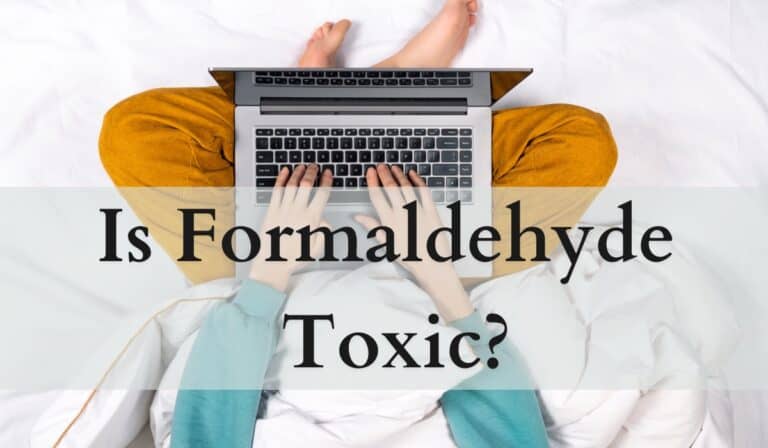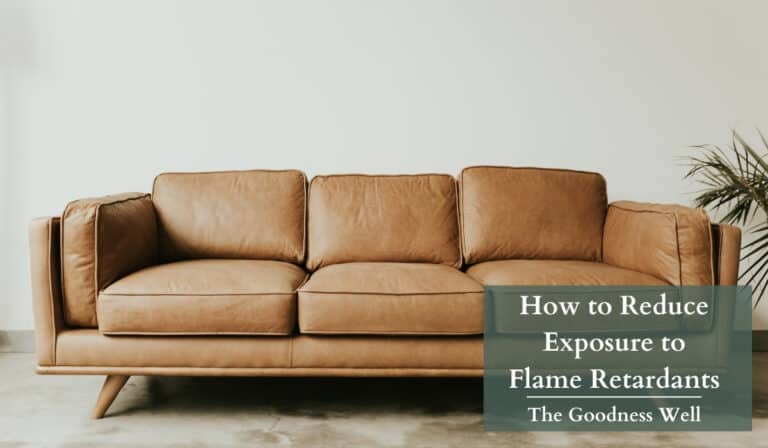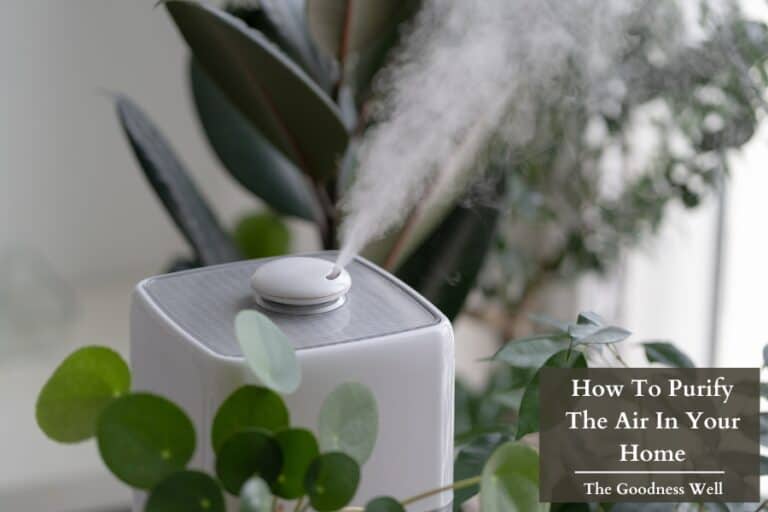How To Get Rid of VOCs In Your Home: 7 Practical Tips
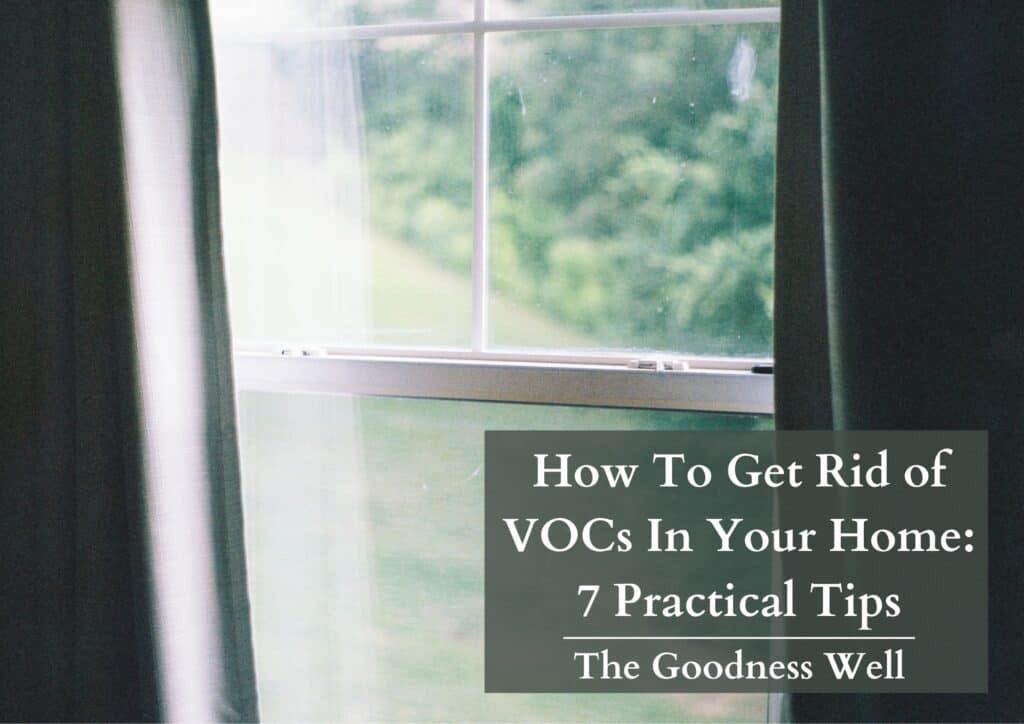
Wondering how to get rid of VOCs? Concerned about your home’s air quality?
The EPA says indoor air quality can be up to 100x more polluted than outdoor air due to a variety of factors.
That’s why we’ve done a lot of research on chemicals affecting our health like VOCs and have come up with some practical tips we’ve adopted ourselves that will help you get rid of them from your own home.
Let’s get right into it!
TL;DR
How to Get Rid of VOCs From Your Home:
- Use The “Cookout” Method
- Control Humidity, Lower The Temperature, and Increase Ventilation
- Choose Low-VOC Products
- Store High-VOC Products Away From Living Area
- Use An Air Purifier
- Minimize & Avoid VOC Sources
- Use Natural Non-Toxic Alternatives
We are reader-supported. So some links in this post may be affiliate links, which means we may earn a small commission if you make a purchase. Learn more
How to Get Rid of VOCs (7 Tips)

1. The “Cookout” Method
Since VOCs tend to off-gas in higher temperatures, we’re going to use that to our advantage in getting rid of them. How? Follow this step by step.
- Close all the windows and turn up the heat for about 4-8 hours (the hotter the better).
- Be sure no one is in the home during this time and hide away any items you might not want VOCs to come into contact with. Close vents to other rooms you don’t want any VOCs in.
- Then open the windows to let all those yucky chemicals out. Easy as that.
How this works: Due to their high vapor pressure, VOCs (including formaldehyde) easily turn into gas and spread into the air, a process that is amplified by higher temperatures.
This method is great if you just renovated or recently got new furniture that has VOCs.
Here’s a video that can walk you through the process as well.
Want more off-gassing tips? Check out our post with tips to speed up off gassing.
2. Temperature, Humidity Control, And Ventilation
An extension from the method above.
Temperature & Humidity Control
As we said above, chemicals tend to off-gas in higher temperatures and humidity so keep the thermostat down some. Also, consider using a dehumidifier to keep levels between 30-50%.
Increase Ventilation
If you are doing any home renovation such as painting or getting new carpets, furniture, or any other furnishings, be sure to ventilate the area.
You can do this by simply opening windows or using exhaust fans to remove the odors. If possible, try to air out any new furniture in a garage or shed for a while before bringing them inside.
Also, when purchasing new furniture, try to grab the floor models that have had time to off-gas in the store.
3. Choose Low-VOC Products
Look for cleaning products, paints, and other household products that are labeled as “low-VOC” or “zero-VOC.
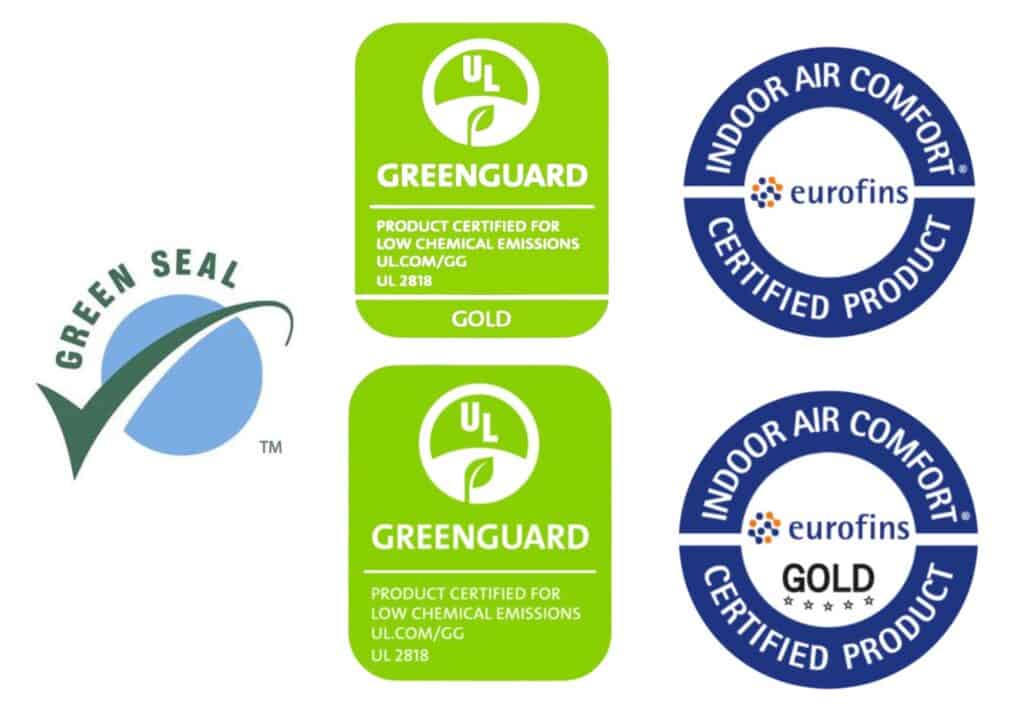
Be sure they have low-VOC certifications like GreenGuard, Green Seal, or Eurofins. EWG has a cleaning database where you can check out non-toxic cleaners and even translate confusing terms you might see on labels.
If you recently used a more than likely high-VOC paint, use these tips to get rid of VOCs from paint fumes lingering in the air
If you can avoid carpet, do it. If you can’t, we suggest investing in a HEPA vacuum cleaner.
4. High VOC Product Storage
If you have paint or any other high-VOC products like gas-powered yard tools or paint thinners try to keep them in a shed or somewhere safe away from any living space or places where you spend a lot of time.
We keep all of ours either in the garage or the shed in the backyard.
5. Use an Air Purifier
Don’t just use any VOC air purifier though.
A study at MIT showed, “For at least some consumer-grade portable air cleaners that claim to remove VOCs from indoor air, VOC removal may actually be minimal, and the air delivered may contain additional VOCs and/or oxidation byproducts, some of which are known to be harmful to human health,”.
They suggested that using air purifiers with activated carbon filters for air cleaning is the way to go.
6. Minimize & Avoid
Minimize
Only purchase the necessary items needed for home renovations or other common VOC-containing products.
If you have unused chemicals lying around under the sink or in the garage, remember to dispose of them responsibly (guidelines differ from state to state, so check your state’s website for more information).
Avoid
If you have a gas stove, you might smell the gas immediately after turning on a burner or the oven. Try to avoid this by stepping away (not out of the kitchen- don’t leave flames unattended) while the pan or oven heats up.
Also, try to ventilate the area by opening a window.
This tip can go for outside of the home as well. For instance, when pumping gasoline, I always stand downwind and away from the fumes.
Also, when that diesel truck right in front of you decides to spew its exhaust all over the place, turn the air off for a minute so you aren’t sucking that air into your cabin.
7. Use Natural, Non-Toxic Alternatives
Saving the best suggestion for last. This guide wouldn’t be complete without mentioning these natural alternatives.
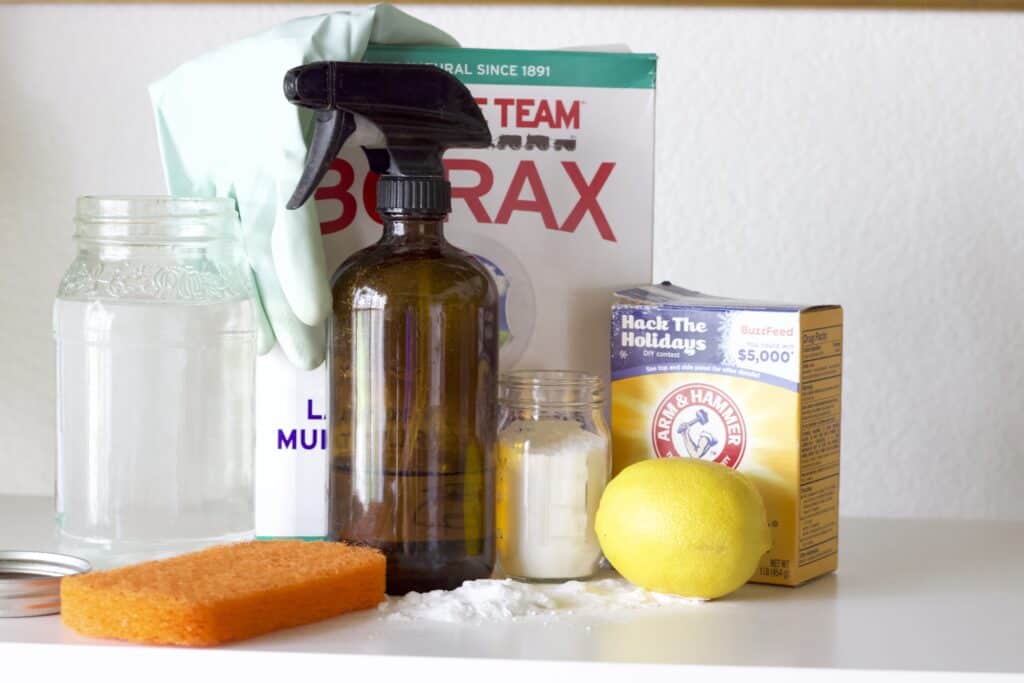
Baking Soda
According to this study at NT University, baking soda works in removing VOCs from the air.
You can sprinkle baking soda on new furniture or carpet and vacuum it up after a few hours.
While this specific method was not tested in the study, it should work in theory. Also, in high VOC areas, you can leave a few baking soda boxes in hidden areas to help cleanse the air as well.
Grow Some Plants!
Plants are great for getting rid of chemicals in the air. We have a bunch all over our home!
According to the American Chemical Society, “In addition to carbon dioxide, plants can absorb harmful gases such as benzene, toluene, and other VOCs”.
DIY Cleaning Mixtures
When it comes to cleaning, opt for nontoxic cleaning products or make your own by using simple ingredients.
Making our own cleaning products has helped us almost totally get rid of all of those toxic cleaners we used to use.
Explore our guide featuring 21 natural cleaning recipes linked above, or check out this quick list of mixtures you can use:
- Vinegar and water: Mix equal parts of white vinegar and water in a spray bottle. This will clean and disinfect countertops, windows, and floors.
- Baking soda and vinegar: Mix 1/2 cup of baking soda with 1/4 cup of white vinegar to create a paste. Use this to clean sinks, toilets, and bathtub grime.
- Lemon juice and olive oil: Mix 1/4 cup of lemon juice with 1/2 cup of olive oil to create a natural furniture polish.
- Hydrogen peroxide and water: Mix 1/2 cup of hydrogen peroxide with 1/2 cup of water in a spray bottle. This will disinfect cutting boards and countertops.
- Castile soap and water: Mix a few drops of Castile soap with warm water to create an all-purpose cleaner for surfaces like walls, floors, and countertops.
- Essential oils and water: Mix a few drops of your favorite essential oil (such as lavender, peppermint, or lemon) with water in a spray bottle to create a natural air freshener.
Remember to always test any new cleaning solution in a small area first to make sure it doesn’t damage the surface you’re cleaning
Final Thoughts 💭
From choosing non toxic furniture and using nontoxic cleaning products to improving ventilation and air filtration, implementing these tips can help you breathe cleaner and healthier air.
So, take action today and implement these tips to create a healthier home environment for you and your loved ones.

